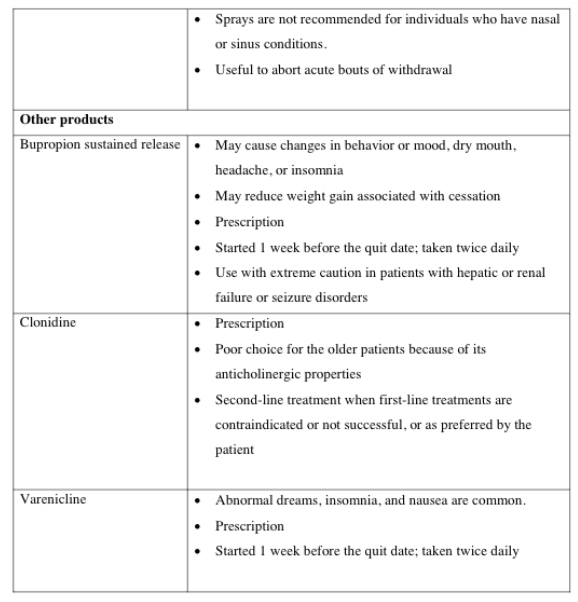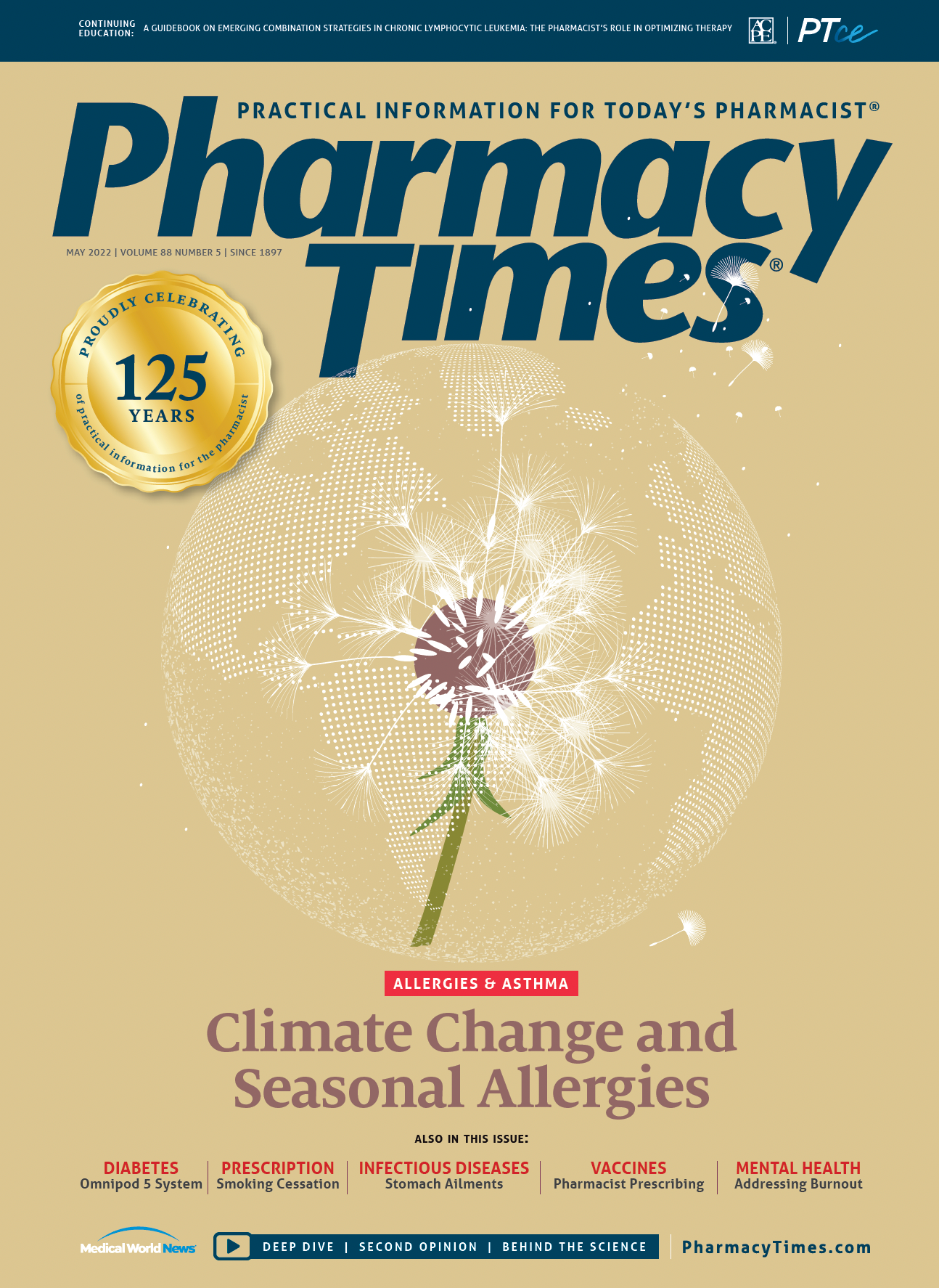Publication
Article
Pharmacy Times
7 Secrets of Smoking Cessation Can Jump-start the Process
Author(s):
Combining nicotine replacement therapy and varenicline is often most successful, but pharmacists can help patients find best approach.
Discussing smoking cessation with patients can be difficult.
Often patients respond with statements such as “It’s the only pleasure I have” or “I only smoke a few cigarettes a day.” Having a toolkit of talking points can engage patients in cessation efforts or at least start the thought process.
Here are 7 facts that may help convince your patients to give up smoking.
1. The earlier patients try to quit smoking, the more likely it is they will be successful. Smoking is a pediatric disease. Most individuals start smoking when they are adolescents.1,2 For the oldest patients that means they started before the hazards of smoking were fully known and widely disseminated. Older smokers generally have a more severe addiction, a propensity to blame smoking-related health problems on aging, and the belief that smoking’s detrimental effects are reversible.1,2 Dispelling myths is critical.
2. Smoking is expensive. In the United States, the average cost for a pack of cigarettes is approximately $7, depending on the state. An individual who smokes 1 pack per day will pay approximately $2555 a year to smoke.3 Ask patients what they would do with the money they’d save by not smoking.3
3. Many smokers do not understand that nicotine is not the only dangerous ingredient in cigarettes.4 Cigarettes are highly efficient toxin delivery devices and may contain arsenic, carbon monoxide, formaldehyde, hydrogen cyanide, polycyclic aromatic hydrocarbons, and thiosulfates. All these substances generate free radicals.4
4. Nicotine increases norepinephrine levels, which creates a calming effect.5,6 Here, too, cigarettes are extremely efficient. Within seconds of lighting up, patients will feel calmer and less anxious.6 The average smoker needs 20 or more cigarettes a day to sustain smoking’s pleasurable effects.5
5. Approximately 70% of smokers are interested in quitting,7 but they believe that it will be too hard or it is too late. Simply asking patients whether they would like to talk about smoking cessation may not result in immediate agreement but may prompt them to come back later.
6. Individuals who stop smoking can sometimes decrease their pill burden. Smoking affects the metabolism of many drugs. Table 18 lists drugs that are likely to interact with smoking. Primarily, smoking interacts with CYP1A2 substrates.

7. The right smoking-cessation product increases the chances of success. There is no best way to quit smoking. Each individual must consider comorbidities, convenience, cost, and the severity of their addiction. Online Table 29-13 lists smoking-cessation products and the pros and cons of each. Some patients may need to use 2 smoking-cessation products for best results.


Conclusion
Smoking cessation is tough and abstinence rates are approximately 25% at 1 year, even with treatment.13 Combining nicotine replacement therapy and varenicline is often most successful, but pharmacists can help patients find their best approach and provide ongoing support.
About The Author
Jeannette Y. Wick, MBA, RPH, FASCP, is the assistant director of the Office of Pharmacy Professional Development at the University of Connecticut School of Pharmacy in Storrs.
References
1. Adler G, Greeman M, Rickers S, Kuskowski M. Smoking in nursing homes: conflicts and challenges. Soc Work Health Care. 1997;25(4)67-81. doi:10.1300/J01ov25n04_052.
2. Committee on Environmental Health, Committee on Substance Abuse, Committee on Adolescence, Committee on Native American Child. From the American Academy of Pediatrics: policy statement-tobacco use: a pediatric disease. Pediatrics. 2009;124(5):1474-1487. doi:10.1542/peds.2009-2114
3. Cigarette prices by state - latest data and trends. Balancing Everything. December 31, 2021. Accessed March 20, 2022. https://balancingeverything.com/cigarette-prices-by-state/
4. Brewer NT, Morgan JC, Baig SA, et al. Public understanding of cigarette smoke constituents: three US surveys. Tob Control. 2016;26(5):592-599. doi:10.1136/tobaccocontrol-2015-052897
5. Hughes JR. Why does smoking so often produce dependence? A somewhat different view. Tob Control. 2001;10(1):62-64. doi:10.1136/tc.10.1.62
6. Dimitriadis K, Narkiewicz K, Leontsinis I, et al. Acute effects of electronic and tobacco cigarette smoking on sympathetic nerve activity and blood pressure in humans. Int J Environ Res Public Health. 2022;19(6):3237. doi:10.3390/ijerph19063237
7. Simoneau T, Hollenbach JP, Langton CR, Kuo CL, Cloutier MM. Smoking cessation and counseling: a mixed methods study of pediatricians and parents. PLoS One. 2021;16(2):e0246231. doi:10.1371/journal.pone.0246231
8. Drug interactions with tobacco smoke. Smoking Cessation Leadership Center. Accessed March 20, 2022. https://smokingcessationleadership.ucsf.edu/sites/smokingcessationleadership.ucsf.edu/files/Documents/FactSheets/Drug%20Interactions%20with%20Tobacco%20Smoke.pdf
9. Martin BA, Wopat MC. Tobacco cessation. In: Kinsky DL, Ferreri SP, Hemstreet B, et al, eds. Handbook of Nonprescription Drugs. 20th ed. American Pharmacists Association. 2021:905-929.
10. Chantix (varenicline). Prescribing information. Pfizer Labs; 2009. Accessed April 13, 2022. https://www.accessdata.fda.gov/drugsatfda_docs/label/2009/021928s012s013lbl.pdf
11. How to use bupropion SR. CDC. Updated May 24, 2021. Accessed March 20, 2022. https://www.cdc.gov/tobacco/campaign/tips/quit-smoking/quit-smoking-medications/how-to-use-quit-smoking-medicines/how-to-use-bupropion-sr.html
12. Gourlay SG, Stead LF, Benowitz NL. Clonidine for smoking cessation. Cochrane Database Syst Rev. 2000;(2):CD000058. doi:10.1002/14651858.CD000058
13. Gómez-Coronado N, Walker AJ, Berk M, Dodd S. Current and emerging pharmacotherapies for cessation of tobacco smoking. Pharmacotherapy. 2018;38(2):235-258. doi:10.1002/phar.2073

Newsletter
Stay informed on drug updates, treatment guidelines, and pharmacy practice trends—subscribe to Pharmacy Times for weekly clinical insights.





